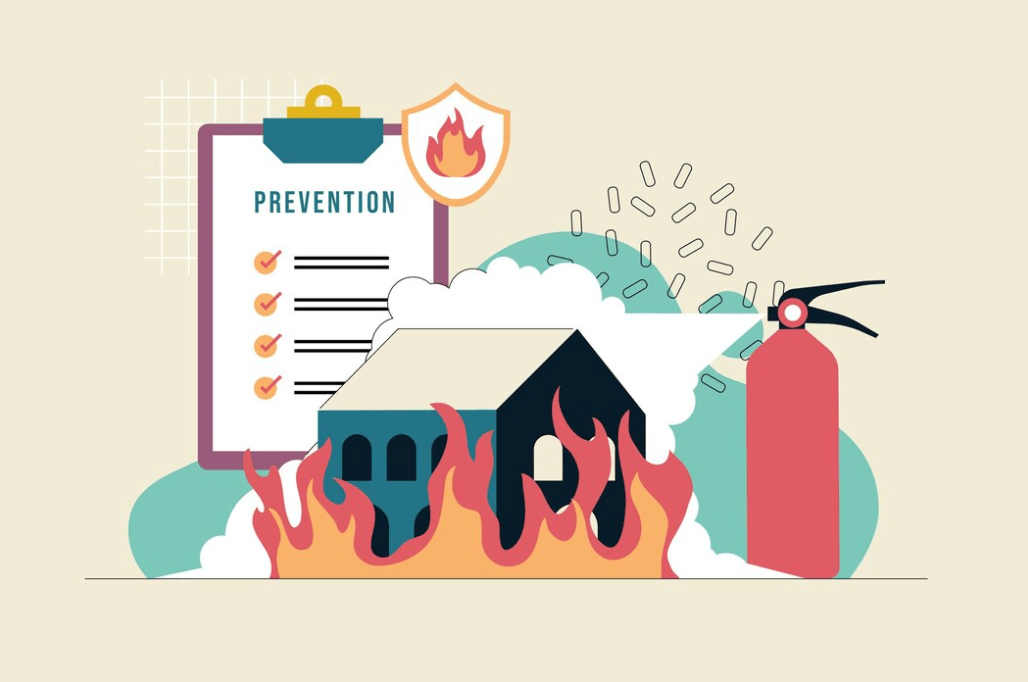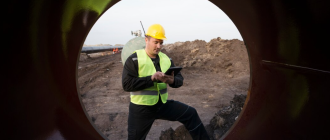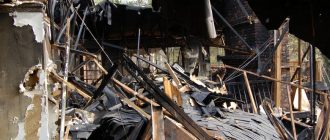Experiencing a fire in your home or business can be devastating and overwhelming. In addition to the emotional toll, it can also result in significant property damage. When faced with the aftermath of a fire, it’s important to understand the process of filing a fire damage claim with your insurance company. This article provides essential information and steps to follow to ensure a smooth and successful claims process.
First and foremost, it’s crucial to document the damage thoroughly. Take photographs and videos of the affected areas, making sure to capture all the details. This evidence will be invaluable when filing your claim and can help support your case. Additionally, keep all receipts for any expenses related to the fire, such as temporary housing or repairs.
Next, contact your insurance company as soon as possible. Notify them of the fire and provide them with the necessary information regarding your policy. The insurer will guide you through the claims process and provide you with the required forms and documents to fill out. It’s important to review your policy carefully to understand what it covers and any limitations or exclusions that may apply.
When filling out the claim forms, be as detailed and accurate as possible. Provide a thorough description of the damage, including the items or property affected and their estimated value. If you have any documentation to support the value of specific items, such as receipts or appraisals, include them with your claim. Honesty and accuracy are crucial during this stage to avoid any complications or delays in the claims process.
Once you have submitted your claim, the insurance company will assign an adjuster to assess the damage. The adjuster will visit your property to inspect the damage and determine the amount of compensation you are entitled to. It’s essential to be present during this inspection to answer any questions or provide additional information that may be necessary.
Finally, be prepared for the claims process to take time. Dealing with fire damage can be a lengthy and complex process, and it may take several weeks or even months before you receive a settlement. Stay in contact with your insurance company and follow up regularly to ensure that your claim is progressing. If you encounter any issues or delays, don’t hesitate to escalate the matter and seek assistance from a professional, such as a public adjuster or an attorney specialized in insurance claims.
Filing a fire damage claim can be a challenging task, but with the right knowledge and approach, you can navigate through the process successfully. Remember to stay organized, provide thorough documentation, and communicate effectively with your insurance company. By following these essential steps, you can maximize your chances of receiving a fair and timely settlement to help you recover from the fire.
Filing a Fire Damage Claim: What You Need to Know
Experiencing a fire in your home or property can be a devastating event. It can leave you feeling overwhelmed and unsure of what steps to take next. One important task that you will need to address is filing a fire damage claim with your insurance company. This process can be complex, but with the right information and guidance, you can navigate it successfully.
Here are some key points to keep in mind when filing a fire damage claim:
- Contact your insurance company as soon as possible: It’s crucial to notify your insurance company of the fire and start the claims process promptly. Most insurance policies have a time limit for filing a claim, so make sure you act quickly.
- Document the damage: Take detailed photographs and videos of the fire damage before cleaning up or making any repairs. This evidence will be essential when substantiating your claim.
- Keep all relevant documents and records: Gather and keep all documentation related to the fire, including insurance policies, receipts for valuables, and any correspondence with the insurance company. This paperwork will help support your claim and facilitate the reimbursement process.
- Secure your property: To prevent further damage, make sure to secure your property by boarding up windows, covering roof holes, and taking other necessary precautions. This step is crucial to protect your property and demonstrate that you’re taking reasonable measures to mitigate further losses.
- Work with a trusted restoration company: Hiring a reputable fire damage restoration company can make the claims process less stressful. They can assist with documenting the damage, estimating repair costs, and negotiating with the insurance adjuster on your behalf.
- Obtain multiple repair estimates: Getting multiple repair estimates from licensed contractors is crucial to ensure you receive a fair settlement offer. Be proactive in obtaining estimates and compare them to ensure you’re not being underpaid.
- Understand your policy coverage: Review your insurance policy carefully to understand what is covered and what is not. This will help you anticipate any potential obstacles or exclusions when filing your claim.
- Keep track of living expenses: If the fire has made your home uninhabitable, make sure to keep track of any additional living expenses you incur, such as temporary accommodation or increased food costs. These expenses may be eligible for reimbursement.
- Communicate regularly with your insurance company: Stay in touch with your insurance company throughout the claims process. Document all communication and follow up on any outstanding issues or requests for information.
- Consider seeking legal advice: If you encounter difficulties with your insurance company or believe you’re being treated unfairly, it may be worth consulting with an attorney specializing in insurance claims. They can provide guidance and advocate for your rights.
Filing a fire damage claim is a complex process, but with knowledge and preparation, you can navigate it effectively. Remember to document everything, communicate with your insurance company, and seek professional assistance when needed. By following these steps, you can maximize your chances of a successful fire damage claim settlement.
Understanding Fire Damage Claims: A Comprehensive Guide
Experiencing a fire in your home or business can be a devastating event. In addition to the emotional toll, there is also the financial burden of repairing the damage and replacing lost or damaged belongings. Understanding the process of filing a fire damage claim can help make the recovery process smoother. This comprehensive guide will walk you through the essential information and steps to follow when filing a fire damage claim.
1. Contact Your Insurance Company
The first step after a fire is to contact your insurance company as soon as possible. They will guide you through the claims process and provide you with the necessary forms and documentation requirements. It’s important to report the fire promptly to avoid any delays in the claims process.
2. Document the Damage
Before you begin any cleanup or repairs, it’s crucial to document the extent of the fire damage. Take photos and videos of each affected area, including both the structural damage and your personal belongings. This evidence will be essential when filing your claim and can help ensure you receive a fair settlement.
3. Secure Your Property
Once you have documented the damage, take steps to secure your property to prevent further damage or theft. Cover any openings in the roof or walls, and board up windows and doors if necessary. This will help protect your property and can also be a requirement of your insurance policy.
4. Keep Records of Expenses
Throughout the claims process, keep detailed records of all expenses related to the fire damage. This includes receipts for temporary housing, meals, and any other additional costs you incur as a result of the fire. These expenses may be reimbursable under your insurance policy, so be sure to keep track of everything.
5. Obtain Estimates for Repairs
Contact reputable contractors or restoration companies to obtain estimates for repairing the fire damage. It’s essential to get multiple estimates to ensure you are receiving a fair price for the work. Share these estimates with your insurance company to negotiate the settlement.
6. Cooperate with the Claims Adjuster
An insurance claims adjuster will be assigned to your case to assess the damage and determine the settlement amount. Cooperate fully with the adjuster, providing any requested documentation or information promptly. This will help expedite the claims process and ensure a fair evaluation of your losses.
7. Review and Understand Your Policy
Take the time to review your insurance policy and understand the coverage provided for fire damage. Familiarize yourself with any exclusions or limits that may apply to your claim. If you have any questions or concerns, don’t hesitate to reach out to your insurance company for clarification.
8. Seek Professional Assistance
If you encounter any difficulties or disputes during the fire damage claims process, consider seeking professional assistance. An experienced public adjuster or attorney can help advocate for your rights and ensure you receive the maximum possible settlement for your fire damage claim.
By following these steps and understanding the fire damage claims process, you can navigate through the aftermath of a fire with greater ease. Remember to act quickly, document the damage thoroughly, and communicate openly with your insurance company to ensure a smooth and fair resolution.
Assessing the Fire Damage: Steps to Take
Assessing the fire damage is an important step in the process of filing a fire damage claim. It helps determine the extent of the damage and the cost of repairs or replacements. Here are some steps to take when assessing the fire damage:
1. Safety first
Before entering the property, ensure that it is safe to do so. Make sure the fire is completely out and there are no immediate dangers such as structural damage or gas leaks. If in doubt, wait for the fire department or a professional to assess the safety of the property.
2. Document the damage
Take photographs or videos of the fire damage from multiple angles. This will serve as evidence for your insurance claim. Capture both the overall damage and any specific areas or items that are affected.
3. Make a list of damaged items
Create an inventory of all the items that have been damaged or destroyed by the fire. Include a detailed description of each item and its estimated value. This will help you determine the value of your claim and ensure that you don’t forget anything when filing your claim.
4. Consult with professionals
Consider hiring a professional fire damage restoration company to assess the damage and provide an estimate for repairs or replacements. They have the expertise to identify hidden damage and can help you understand the scope of the restoration process.
5. Contact your insurance company
Notify your insurance company as soon as possible and provide them with the details of the fire damage. They will guide you through the claims process and may require additional documentation or evidence of the damage.
By following these steps, you can ensure that you have a thorough assessment of the fire damage, which will help facilitate the claims process and ensure that you receive the appropriate compensation for your losses.
Gathering Documentation for Your Fire Damage Claim
When filing a fire damage claim, it’s essential to gather and organize all the necessary documentation to support your claim. Having proper documentation will help ensure a smooth and successful claims process. Here are some key steps to follow:
1. Contact Your Insurance Company
The first step is to contact your insurance company and inform them about the fire incident. They will provide you with specific instructions on how to proceed with your claim and may assign a claims adjuster to assess the damage.
2. Take Detailed Photographs
Before cleaning up or making any repairs, take detailed photographs or videos of all the damaged areas in your property. This visual documentation will serve as evidence of the extent of the fire damage.
3. Collect Proof of Ownership
Compile a list of all the damaged or destroyed items, along with their purchase receipts, photographs, or any other documentation that proves your ownership and value. This inventory will help ensure you are properly compensated for your losses.
4. Obtain Fire Reports
Contact the local fire department and request a copy of the fire report. This report will provide an official account of the fire incident, including the cause, time, and extent of the fire damage. It may be required by your insurance company for claim processing.
5. Preserve Damaged Items
If possible, keep the damaged items in a safe place until the insurance company’s claims adjuster has assessed them. This will allow them to verify the damage and evaluate the value of the items accurately.
6. Keep Track of Expenses
Keep a record of all the expenses related to the fire damage, such as temporary accommodations, meals, and any necessary repairs or clean-up costs. These documented expenses will be essential for reimbursement or additional living expenses coverage.
By gathering these essential documents, you can strengthen your fire damage claim and increase the likelihood of a fair settlement with your insurance company. Remember to consult with your insurance agent or claims adjuster for specific guidance on documentation requirements and claim procedures.
Working with Insurance Adjusters: Essential Tips
Filing a fire damage claim can be a complicated and stressful process. One of the key players in this process is the insurance adjuster. Insurance adjusters are responsible for assessing the damage and determining the payout for the claim. Here are some essential tips for working with insurance adjusters:
1. Be prepared: Before meeting with the insurance adjuster, gather all the necessary documents related to your claim, such as photographs of the damage, receipts for repairs, and a detailed inventory of the damaged items. This will help support your claim and provide evidence of the extent of the damage.
2. Be honest: It is important to provide the insurance adjuster with accurate and truthful information regarding the fire damage. Any attempts to exaggerate or falsify information can lead to your claim being denied or delayed. Provide all the necessary details and answer any questions honestly.
3. Understand your policy: Familiarize yourself with the terms and conditions of your insurance policy. This will help you understand what is covered and what is not. Ask the insurance adjuster for clarification if you have any doubts or questions about your coverage.
4. Document everything: Take notes during your interactions with the insurance adjuster. Keep a record of all conversations, including dates and times, as well as any agreements or promises made by the adjuster. This documentation can be helpful in case of any disputes or discrepancies.
5. Get multiple estimates: It is advisable to obtain multiple estimates for the repairs and restoration work required. This will help ensure that you receive a fair and accurate payout for your claim. Provide these estimates to the insurance adjuster for their review and consideration.
6. Don’t settle for less: If you feel that the insurance adjuster’s settlement offer is insufficient to cover the actual cost of the damages, you have the right to negotiate. Present any additional evidence or documentation that supports your claim for a higher payout.
7. Consider hiring a public adjuster: If you are having difficulty in reaching a fair settlement with the insurance adjuster, you may want to consider hiring a public adjuster. A public adjuster can help advocate for your interests and work towards securing a better settlement for your fire damage claim.
Remember, working with insurance adjusters is a crucial part of the fire damage claim process. By following these essential tips, you can increase your chances of obtaining a fair and favorable outcome for your insurance claim.
The Importance of Properly Documenting Fire Damage
Properly documenting fire damage is crucial when filing a fire damage claim. It serves as evidence for your insurance company and helps ensure that you receive the compensation you are entitled to. Here are some reasons why it is important to document fire damage correctly:
1. Providing Proof
By documenting the fire damage, you provide tangible evidence of the extent of the loss. This can include photographs, videos, and written descriptions of the damage. This proof helps support your claim and provides a clear understanding of the impact the fire has had on your property.
2. Assessing the Value of the Damage
Accurately documenting fire damage allows you to assess the value of the damage sustained. This includes not only the cost of repairs but also the loss of personal belongings. By accurately assessing the value of the damage, you can ensure that you receive the appropriate compensation from your insurance company.
3. Avoiding Disputes
Proper documentation can help prevent disputes with your insurance company. By providing thorough documentation, you can clearly demonstrate the extent of the damage and the need for compensation. This reduces the likelihood of disputes and ensures a smoother claims process.
4. Meeting Insurance Requirements
Insurance companies often have specific requirements for documenting fire damage. By adhering to these requirements, you ensure that your claim is processed efficiently and effectively. This may include providing detailed descriptions, measurements, and supporting documentation for all aspects of the damage.
Overall, properly documenting fire damage is essential in filing a fire damage claim. It provides proof of the loss, helps assess its value, avoids disputes, and meets insurance requirements. With accurate documentation, you can increase your chances of receiving the compensation you deserve.
Common Mistakes to Avoid When Filing a Fire Damage Claim
When filing a fire damage claim, it is important to be aware of common mistakes that can potentially harm your chances of getting the compensation you deserve. By avoiding these mistakes, you can ensure a smoother and more successful claim process.
- Delaying the claim: It is crucial to report the fire damage and file the claim as soon as possible. Waiting too long can complicate the process and may even result in denial of your claim.
- Not documenting the damage: Failing to thoroughly document the fire damage can hinder your claim. Take photos and videos of the affected areas, and keep detailed records of all damaged items, including their value and purchase receipts if available.
- Not contacting the insurance company: You must inform your insurance company about the fire damage as soon as possible. Delaying or failing to contact them can lead to complications and may even render your claim invalid.
- Filing an incomplete claim: It is important to provide all necessary information and documents when filing your claim. Incomplete or missing information can cause delays or even rejection of your claim.
- Not hiring a public adjuster: Hiring a public adjuster who specializes in fire damage claims can greatly increase your chances of a successful claim. They have the expertise to guide you through the process and negotiate on your behalf.
- Accepting a low settlement: Insurance companies may try to offer a low settlement amount in hopes that you will accept it. It is important to carefully assess the value of your damages and negotiate for a fair and accurate settlement.
- Not reviewing your policy: Familiarize yourself with the details of your insurance policy, including coverage limits and exclusions related to fire damage. Understanding your policy can help you avoid potential complications or misunderstandings during the claims process.
By avoiding these common mistakes, you can strengthen your fire damage claim and improve your chances of receiving the compensation you need to recover from the devastating effects of a fire.
Key Information to Include in Your Fire Damage Claim
When filing a fire damage claim, it is crucial to include all necessary information to ensure a smooth process and increase the chances of a successful claim. Here are some key details to include:
- Date and time of the fire: Provide the exact date and time when the fire occurred. This helps the insurance company investigate the incident accurately.
- Cause of the fire: Specify the cause of the fire, such as an electrical malfunction, cooking mishap, or any other identifiable reason. This information helps determine the coverage and liability.
- Location: Describe the location where the fire took place, including the address, room, or area of the property. This helps the insurance adjuster assess the extent of the damage.
- Extent of the damages: Provide a detailed list of all the damages caused by the fire. This includes structural damage, loss of personal belongings, and any additional property affected.
- Photographic evidence: Include photographs or videos of the damaged property as supporting evidence. This visual documentation can provide irrefutable proof of the extent of the damages.
- List of damaged personal belongings: Make a list of all personal belongings that were destroyed or damaged in the fire. Include the item description, approximate value, and purchase date if available. This helps in determining the compensation for your losses.
- Police or fire department reports: If applicable, include any reports filed by the police or fire department regarding the fire. This can provide valuable information and support your claim.
- Witness statements: If there were witnesses to the fire, gather their contact information and ask them to provide a statement. Witness statements can add credibility to your claim.
- Documentation of expenses: Keep receipts and documentation of any expenses incurred as a result of the fire, such as temporary accommodation, emergency repairs, or other necessary costs. These expenses may be reimbursed by your insurance company.
- Contact information: Provide your full contact information, including your name, address, phone number, and email. This ensures that the insurance company can easily reach you for any updates or further information.
Remember to carefully review and double-check all the information included in your fire damage claim before submitting it to your insurance company. Providing accurate and detailed information will help expedite the claims process and improve the chances of receiving the compensation you deserve.
Understanding Insurance Coverage for Fire Damage
When your property has been damaged by fire, understanding your insurance coverage is crucial. Here are some important points to consider:
1. Review your insurance policy
The first step in understanding your insurance coverage for fire damage is to carefully review your insurance policy. Pay close attention to the terms and conditions, coverage limits, and any exclusions related to fire damage. It’s important to know what is covered and what is not.
2. Contact your insurance company
After reviewing your policy, contact your insurance company as soon as possible to report the fire damage. They will guide you through the claims process and provide you with the necessary forms and instructions.
3. Document the damage
Before starting any repairs or cleanup, it’s important to document the fire damage. Take photos and videos of the affected areas and make a detailed inventory of the damaged items. This documentation will be valuable when filing your claim.
4. Mitigate further damage
While waiting for the insurance company to assess the damage, take steps to mitigate further damage to your property. This may include boarding up windows, covering exposed areas, or securing the property to prevent unauthorized access.
5. Work with insurance adjusters
Once the insurance company has been notified, an adjuster will be assigned to assess the damage and estimate the cost of repairs. Cooperate fully with the adjuster and provide them with all the necessary documentation and information they require.
6. Understand the claims process
It’s important to understand the claims process and the timeline for resolving your fire damage claim. Ask your insurance company for a clear explanation of the steps involved and keep track of all communications and paperwork related to your claim.
By understanding your insurance coverage for fire damage and following the necessary steps, you can ensure a smoother and more successful claims process, helping you recover and rebuild after a fire.
How to Expedite the Fire Damage Claim Process
Dealing with the aftermath of a fire can be a stressful and overwhelming experience. However, it’s important to take action swiftly to file a fire damage claim and get the compensation you deserve. Here are some steps you can take to expedite the fire damage claim process:
1. Contact your insurance company immediately
As soon as the fire is extinguished and you are safe, contact your insurance company to report the damage. Provide them with all the necessary information, such as the date, time, and location of the fire. This will start the claims process and enable the insurance adjuster to assess the damage as soon as possible.
2. Document the damage
Take photographs or videos of the fire damage before you start the cleanup or restoration process. This evidence will support your claim and help the insurance company understand the extent of the damage. Make sure to document all affected areas, including structural damage, personal property, and belongings.
3. Mitigate further damage
It’s crucial to take immediate action to prevent further damage to your property. For example, board up broken windows and doors, cover roof openings, and secure the property to prevent theft or vandalism. Keep all receipts for the emergency repairs as these expenses may be covered by your insurance policy.
4. Keep records of expenses
Throughout the fire damage claim process, keep detailed records of all your expenses related to the fire. This includes costs for temporary accommodations, meals, transportation, and any other expenses incurred as a result of the fire. These records will help you claim reimbursement from your insurance company.
5. Cooperate with the insurance adjuster
Once the insurance adjuster is assigned to your claim, cooperate fully with them. Provide any requested documentation or information promptly and thoroughly. Be available for inspections or meetings to expedite the claims process. Clear communication and cooperation will help move the process along more quickly.
6. Seek professional assistance
If you find the fire damage claim process too complex or overwhelming, consider seeking professional assistance. Public adjusters or fire damage restoration companies can help navigate the claim process and negotiate on your behalf. They have expertise in dealing with insurance companies and can help expedite your claim.
By following these steps, you can streamline the fire damage claim process and increase your chances of receiving a fair and timely settlement from your insurance company.
Dealing with Disputes and Denials: What to Do
Unfortunately, there may be instances when you file a fire damage claim and it gets disputed or denied by your insurance company. This can be frustrating, but there are steps you can take to address the situation and potentially have the decision reversed.
1. Review your policy: Start by carefully reviewing your insurance policy to understand the terms and conditions that apply to fire damage claims. Make sure you have a clear understanding of what is covered and what is not.
2. Gather evidence: Compile comprehensive documentation of the damages caused by the fire. Take photographs, videos, and detailed notes of the affected areas. This evidence will support your claim and help counter any disputes from the insurance company.
3. Communicate with your insurance company: Reach out to your insurance company and explain your situation. Provide them with all the necessary documentation and facts supporting your claim. Ask for a detailed explanation of why your claim was disputed or denied.
4. Seek professional assistance: If you are facing difficulties in resolving the dispute with your insurance company, consider seeking professional help. Hire a public adjuster or an attorney specializing in insurance claims to guide you through the process.
5. File an appeal: If your claim is denied, you have the option to file an appeal. Follow the instructions provided by your insurance company to initiate the appeal process. Make sure to provide any additional evidence or information that could strengthen your case.
6. Keep detailed records: Throughout the entire claims process, keep a record of all your interactions with the insurance company. Document the dates, times, and individuals you have spoken to. This will be useful in the event of further disputes or legal action.
Remember, dealing with disputes and denials can be a complex and time-consuming process. It’s important to stay persistent and advocate for your rights. Consult with professionals if needed and explore all available options to ensure a fair settlement for your fire damage claim.
Legal Considerations for Fire Damage Claims
When filing a fire damage claim, it is important to consider the legal aspects involved. Here are some key considerations to keep in mind:
- Insurance Coverage: Review your insurance policy carefully to understand the extent of your coverage for fire damage. Make sure you are aware of any exclusions or deductibles that may apply.
- Documentation: Take thorough documentation of the damage and its cause. This includes photographs, videos, and written descriptions. This evidence will be essential when filing your claim and dealing with insurance adjusters.
- Expert Evaluation: Consider seeking an expert evaluation of the damage, especially if it is extensive. An expert’s opinion can help support your claim and ensure that all damages are properly accounted for.
- Timely Filing: Be mindful of any deadlines for filing your claim. Insurance policies may stipulate a specific time frame within which you must report the damage. Failing to file within this time can jeopardize your claim.
- Appraisal Process: In some cases, disagreements may arise between you and your insurance company regarding the value of the damages or the extent of coverage. Familiarize yourself with the appraisal process and be prepared to negotiate if necessary.
- Legal Assistance: If you encounter difficulties with your fire damage claim, it may be beneficial to seek legal assistance. An attorney experienced in insurance claims can help navigate the complex legal landscape and ensure your rights are protected.
Remember, dealing with a fire damage claim can be stressful and confusing. It is important to be proactive, informed, and diligent throughout the process to maximize your chances of a fair settlement.
Additional Resources for Fire Damage Claim Assistance
Dealing with the aftermath of a fire can be overwhelming, and navigating the insurance claims process can be complex. Fortunately, there are several additional resources available to help you with your fire damage claim.
1. Local Fire Department
Your local fire department should be one of your first points of contact after a fire. They can provide invaluable assistance and guidance in assessing the damage, documenting it properly, and advising you on the necessary steps to take for filing a claim.
2. Public Adjuster
Hiring a public adjuster can be a wise decision if you’re facing difficulties with your insurance company. A public adjuster works on your behalf to ensure that you receive a fair settlement for your fire damage claim. They have extensive knowledge of insurance policies and can negotiate with your insurer to maximize your claim.
It’s important to do your research and choose a reputable public adjuster who is licensed and experienced in handling fire damage claims.
These additional resources can provide the support and expertise you need to successfully navigate the fire damage claim process and ensure you receive the compensation you deserve. Remember to keep detailed documentation of all damages, expenses, and conversations related to your claim to strengthen your case.







